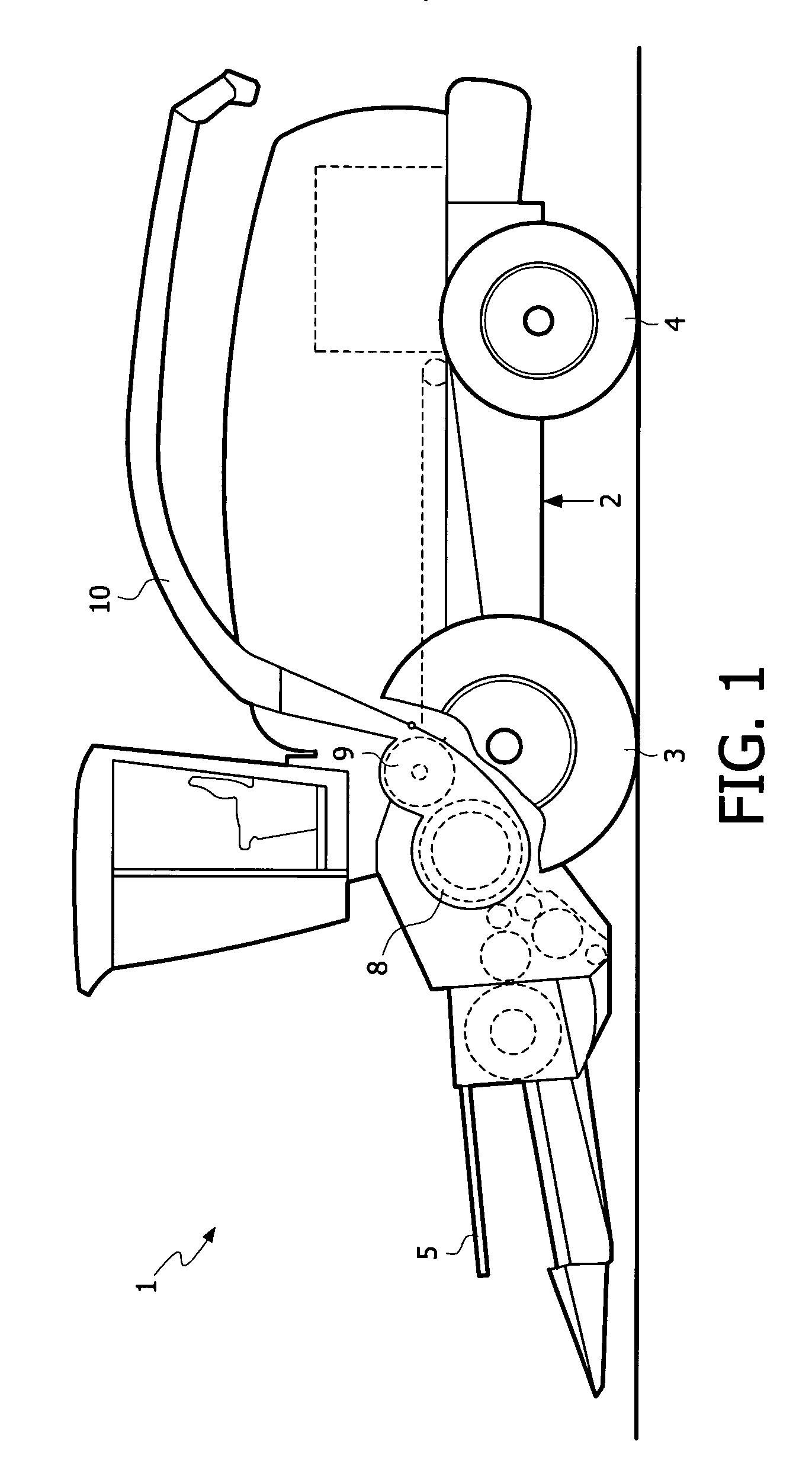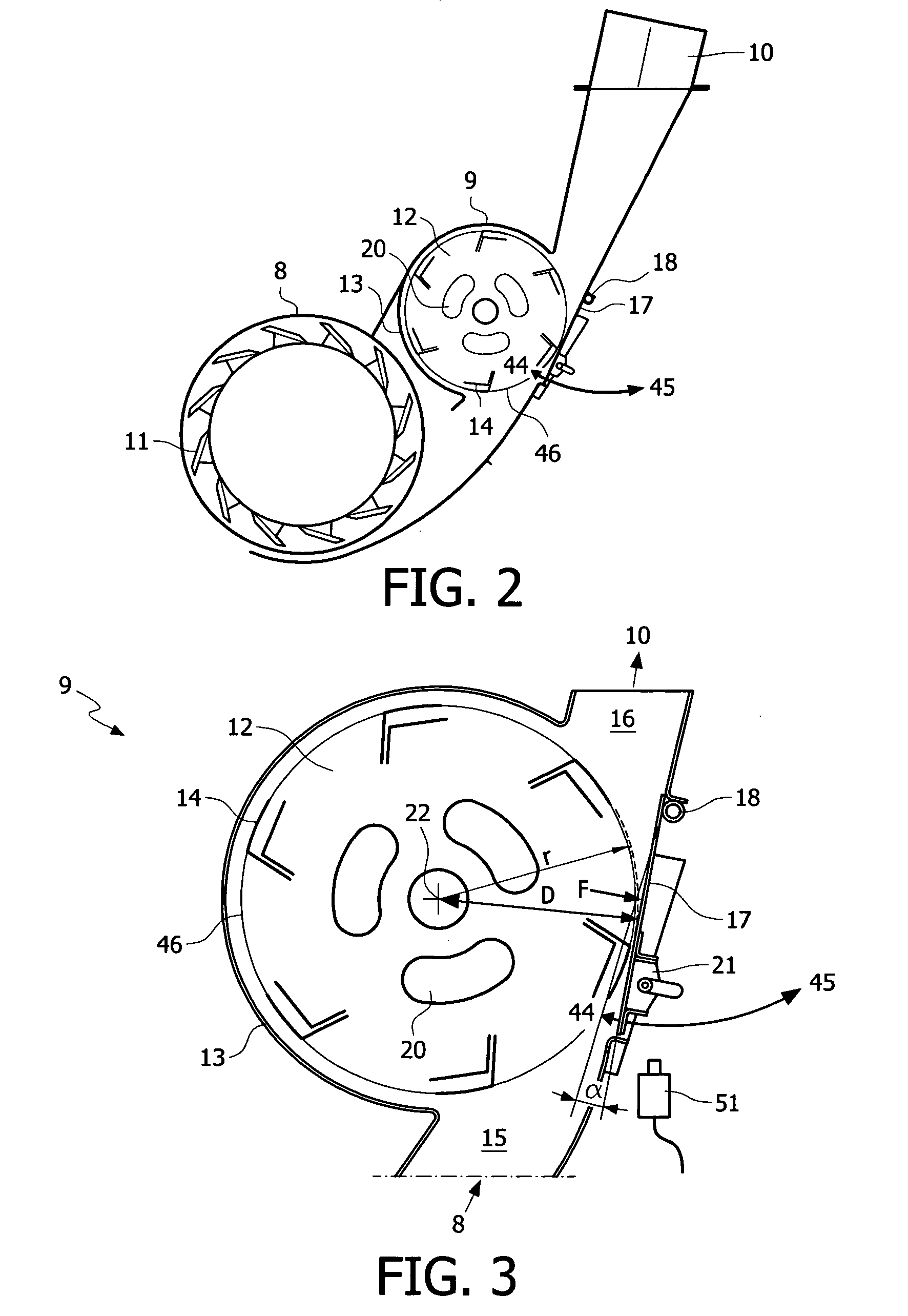Forage harvester blower
a blower and harvester technology, applied in the field of harvesters, can solve the problems of serious damage to the blower rotor and the blower housing, knife breakage, and blower damage, and achieve the effect of minimizing play, easy and accurate adjustment of the diameter, and optimal set up of the blower paddle distan
- Summary
- Abstract
- Description
- Claims
- Application Information
AI Technical Summary
Benefits of technology
Problems solved by technology
Method used
Image
Examples
Embodiment Construction
[0021]The present invention will now be described with reference to certain embodiments and certain drawings but the invention is not limited thereto. The drawings are schematic. The terms “front”, “rear”, “forward”, “rearward”, “right” and “left” used throughout the specification are determined with respect to the normal direction of movement of the machine in operation and are not to be construed as limiting terms.
[0022]Referring to FIG. 1, there is shown a self-propelled forage harvester 1 which embodies the present invention. It being noted that the principles of the present invention could be applied to towed forage harvesters as well. The forage harvester 1 includes a main frame 2 supported on front and rear pairs of wheels 3 and 4, of which only one of each pair is shown. The forage harvester is shown equipped with a crop collecting apparatus, in the form of a row crop attachment 5, suitable for the harvesting of maize, but which can be replaced with a conventional windrow pi...
PUM
 Login to View More
Login to View More Abstract
Description
Claims
Application Information
 Login to View More
Login to View More - R&D
- Intellectual Property
- Life Sciences
- Materials
- Tech Scout
- Unparalleled Data Quality
- Higher Quality Content
- 60% Fewer Hallucinations
Browse by: Latest US Patents, China's latest patents, Technical Efficacy Thesaurus, Application Domain, Technology Topic, Popular Technical Reports.
© 2025 PatSnap. All rights reserved.Legal|Privacy policy|Modern Slavery Act Transparency Statement|Sitemap|About US| Contact US: help@patsnap.com



